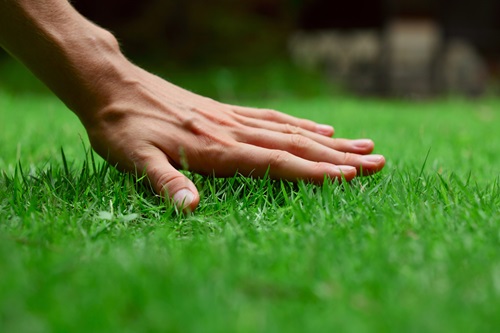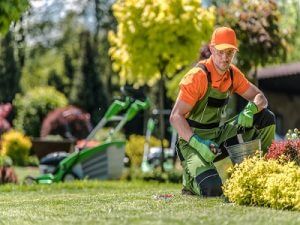
Crabgrass is the bane of many gardeners and homeowners. So, this resilient weed can quickly take over your lawn, making it look unsightly and unkempt. Fortunately, with a bit of knowledge and effort, you can effectively identify, prevent, and control crabgrass. Therefore, here’s a comprehensive lawn care guide to help you keep your lawn crabgrass-free.
Lawn Care Tips : Dealing With Crabgrass
Identifying Crabgrass
Crabgrass is an annual weed that thrives in warm weather. Furthermore, it typically appears in late spring and summer when soil temperatures rise above 55°F (13°C). Crabgrass has a distinctive look; moreover, its blades are wider and coarser than those of typical lawn grass, and it grows in clumps that can spread outwards like a crab’s legs.
And, the weed’s seed heads are another telltale sign. They form in finger-like clusters that resemble a crab’s claws. Therefore, these seed heads can produce thousands of seeds, which contribute to its rapid spread and resilience. So, by recognising these characteristics, you can quickly identify crabgrass in your lawn.
Preventing Crabgrass
Preventing crabgrass is easier than dealing with an established infestation. Moreover, here are some effective lawn maintenance and prevention strategies:
1. Maintain a Healthy Lawn
A thick, healthy lawn is your best defence against crabgrass. Therefore, well-maintained lawns with dense grass leave little room for crabgrass seeds to take root. Regular mowing, watering, and fertilising can keep your lawn in top condition. Furthermore, keeping your grass height slightly higher (around 2.5 to 3 inches) can shade the soil, making it harder for crabgrass seeds to germinate.
2. Use Pre-Emergent Herbicides
Pre-emergent herbicides are a crucial tool in the fight against crabgrass. These products work by creating a chemical barrier on the soil surface, preventing crabgrass seeds from germinating. So, apply pre-emergent herbicides in early spring, just before crabgrass seeds begin to sprout. Timing is critical; additionally, applying too late can reduce the herbicide’s effectiveness. Additionally, water the lawn lightly after application to activate the herbicide.
3. Overseeding
Overseeding is the process of spreading grass seed over your existing lawn. This helps to fill in bare spots and improve the lawn’s density, making it harder for crabgrass to establish. Late summer or early autumn is the best time for overseeding, as it allows new grass to grow without the competition from crabgrass.
 Controlling Crabgrass
Controlling Crabgrass
If crabgrass has already made an appearance in your lawn, don’t despair. Therefore, several methods can help you regain control:
1. Manual Removal
For small infestations, manual removal is an effective method. So, pulling crabgrass by hand is best done when the soil is moist, as it makes it easier to remove the entire root system. Beware of reseeding, which can happen if you don’t properly get rid of pulled weeds.
2. Post-Emergent Herbicides
Post-emergent herbicides are designed to kill crabgrass after it has germinated. Select a herbicide that targets crabgrass specifically and follow the manufacturer’s instructions for application. Be cautious when using these products, as they can also harm desirable grass species if not applied correctly. Additionally, avoid mowing the lawn for a few days before and after applying post-emergent herbicides to maximise their effectiveness.
3. Mulching
In garden beds and landscaped areas, applying a thick layer of mulch can help suppress crabgrass. Moreover, mulch blocks sunlight, which is essential for crabgrass seeds to germinate. Organic mulches, such as wood chips or straw, are particularly effective and also improve soil health as they decompose.
Long-Term Lawn Care Tips
To keep crabgrass at bay, adopt a proactive approach to lawn care in Conway SC. Here are some additional tips:
1. Soil Testing
Regular soil testing can help you understand your lawn’s nutrient needs. Then, based on the test results, you can amend the soil to promote healthy grass growth. And, a well-balanced soil with the right pH levels discourages weed growth, including crabgrass.
2. Proper Watering
Watering your lawn deeply but infrequently encourages deep root growth, making your grass more resilient and less susceptible to weeds. Aim to water early in the morning to minimise evaporation and fungal growth. So, providing about an inch of water per week, either from rainfall or irrigation, should be sufficient.
3. Aeration
Aerating helps prevent soil compaction and promotes healthy root development. Aeration is typically done in the autumn or spring, providing your lawn with the conditions it needs to thrive.
Call Conway Lawn Care Service now if you’re looking for lawn care or landscaping services that can transform your home.
Like our Facebook page for more great info about heating and cooling services.
No comments:
Post a Comment